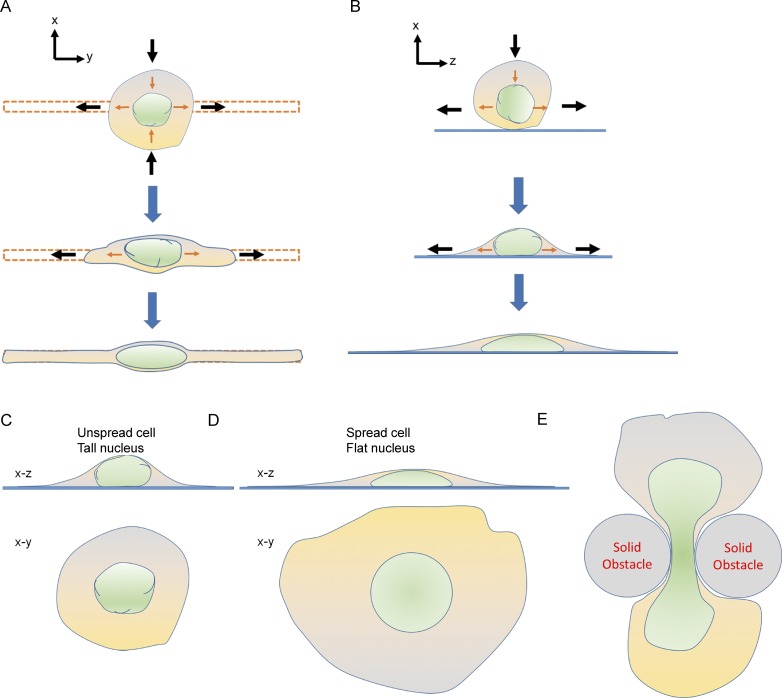Figure 2.
Nuclear shape during cell spreading is a result of incremental changes in nuclear shape caused by incremental changes in cell shape. (A and B) x–y and x–z cross sections of cells and nuclei based on data from spreading fibroblasts on 1D fibronectin lines (red; Tocco et al., 2018). The direction of motion of the cell boundary is shown by black arrows, while orange arrows show the direction of motion of the nuclear boundary. The nuclear boundaries follow the motion of the cell boundaries, which results in nuclear shape mimicking cell shape. This correlation between the nuclear and cell shape is observed both in the x–y plane (A) and in the x–z plane (B). Coordination between nuclear and cell shape. (C and D) Illustration of observations by Li et al. (2015) that nuclear flattening is inversely correlated with cell spreading. In less-spread cells, the nucleus remains round, while in well-spread cells, it flattens out and reaches a steady-state shape after the lamina becomes taut. (E) An hourglass-type shape of the nucleus that can be observed during cell migration through confined spaces. These types of observations (C–E) can be explained by positing a mechanical stress on the nucleus caused by motion of cell boundaries that drives motion of nuclear boundaries, which naturally results in a coordination between nuclear and cell shape.

